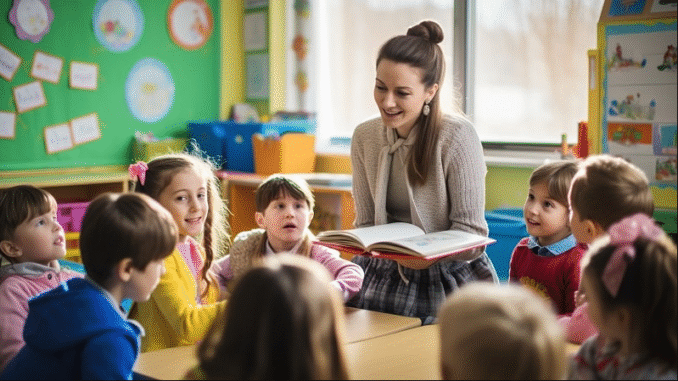
Top 10 Innovative Teaching Methods Transforming Education in 2025
Education in 2025 looks very different from just a decade ago. The rise of new technologies, shifts in learning preferences, and the demand for skills relevant to a fast-changing world have transformed the way teachers approach classrooms. Students today are not only seeking knowledge but also looking for interactive, personalized, and real-world experiences that prepare them for the future.
In this article, we will explore the top 10 innovative teaching methods transforming education in 2025 and shaping the future of learning.
1. Blended Learning Models
Blended learning combines traditional classroom instruction with digital resources and online platforms. In 2025, this approach has become the standard in many schools and universities. Teachers deliver lessons in person, while students also access recorded lectures, interactive simulations, and self-paced modules online.
This flexibility allows learners to revisit concepts, study at their own speed, and engage with materials in a way that best suits their learning styles. Blended learning also ensures that education remains accessible, even in times of disruption, such as pandemics or natural disasters.
2. Gamification of Education
Gamification is no longer just a buzzword—it has become a powerful tool to boost student engagement. By integrating elements of play such as points, badges, leaderboards, and challenges into lessons, educators make learning more interactive and fun.
For example, a math lesson can turn into a problem-solving quest, or a history class can be structured like an adventure game. This approach not only keeps students motivated but also helps improve retention rates and teamwork skills. In 2025, gamification is being widely adopted across subjects, from elementary schools to corporate training programs.
3. AI-Powered Personalized Learning
Artificial intelligence (AI) has revolutionized education by offering personalized learning experiences. AI systems track a student’s strengths, weaknesses, and progress, then recommend specific lessons, quizzes, and activities tailored to their needs.
For instance, an AI platform can detect if a student struggles with fractions in mathematics and automatically provide extra exercises and visual explanations. This reduces frustration and ensures that learners master concepts before moving on. In 2025, AI tutors and virtual assistants are becoming common partners for teachers, helping them give every student individual attention.
4. Project-Based Learning (PBL)
Project-Based Learning is an innovative method where students learn by working on real-world projects instead of memorizing theories. This approach encourages critical thinking, creativity, and collaboration.
For example, instead of just reading about climate change, students might design a sustainability project for their community, conduct research, and present their solutions. In 2025, PBL has become an essential part of education, especially in STEM subjects, because it bridges the gap between academic knowledge and practical application.
5. Flipped Classroom Approach
The flipped classroom has gained immense popularity in recent years and continues to thrive in 2025. Traditionally, teachers deliver lessons during class and assign homework afterward. In a flipped classroom, students watch recorded lectures or read study materials before class. Classroom time is then dedicated to discussions, problem-solving, and hands-on activities.
This method promotes deeper understanding, as students come prepared and use class time for active engagement rather than passive listening. Teachers act more as facilitators, guiding discussions and ensuring students grasp key concepts.
6. Virtual Reality (VR) and Augmented Reality (AR) Learning
Immersive technologies such as VR and AR are transforming the way subjects are taught. Imagine studying history by taking a virtual tour of ancient Rome, or learning anatomy by exploring a 3D model of the human body.
These technologies create engaging and realistic experiences that traditional textbooks cannot offer. In 2025, VR and AR labs are common in schools, making complex topics more understandable and memorable. They also help students develop practical skills in safe environments, such as practicing medical procedures or engineering simulations.
7. Collaborative Online Learning
Collaboration has always been central to education, but in 2025, online collaboration platforms have taken it to a new level. Students from different parts of the world can work together on group projects, share ideas, and solve problems in real time.
Digital tools like virtual whiteboards, group chats, and video conferencing allow seamless teamwork regardless of location. This global learning environment not only improves academic outcomes but also fosters cultural awareness, communication, and teamwork—skills essential in the modern workplace.
8. Competency-Based Education (CBE)
Competency-Based Education focuses on mastering specific skills or knowledge rather than simply completing a course within a set time frame. In 2025, this method is widely used to ensure that students truly understand concepts before moving forward.
For instance, a student cannot advance from basic algebra to advanced algebra until they have demonstrated mastery of the first level. This eliminates learning gaps and ensures a strong foundation for future learning. CBE is especially useful in vocational and professional training, where mastery of skills is crucial.
9. Mindfulness and Social-Emotional Learning (SEL)
Education in 2025 is not just about academics—it also focuses on the mental and emotional well-being of students. Mindfulness practices, meditation, and social-emotional learning activities are integrated into classrooms to help students manage stress, build empathy, and improve focus.
Teachers are trained to nurture emotional intelligence alongside intellectual growth. This holistic approach ensures that learners are better equipped to handle challenges in both their academic and personal lives.
10. Hybrid Learning Spaces and Flexible Classrooms
Classrooms in 2025 are no longer limited to rows of desks and chalkboards. Schools are investing in hybrid learning spaces that support both in-person and remote learners simultaneously. Flexible seating, interactive whiteboards, and digital collaboration tools make classrooms dynamic and adaptable.
These spaces encourage creativity, teamwork, and independent learning. Hybrid classrooms also provide inclusivity, ensuring that students who cannot attend physically still have equal access to quality education.
Conclusion
The year 2025 marks a turning point in education, with innovative teaching methods reshaping how students learn and how teachers teach. From AI-powered personalization and gamification to VR classrooms and social-emotional learning, these methods make education more engaging, accessible, and effective.
As the world continues to evolve, education will remain at the heart of preparing individuals for the future. By embracing these innovative teaching methods, schools, colleges, and training institutions are equipping students not only with knowledge but also with critical skills, resilience, and creativity needed to thrive in a rapidly changing world.
